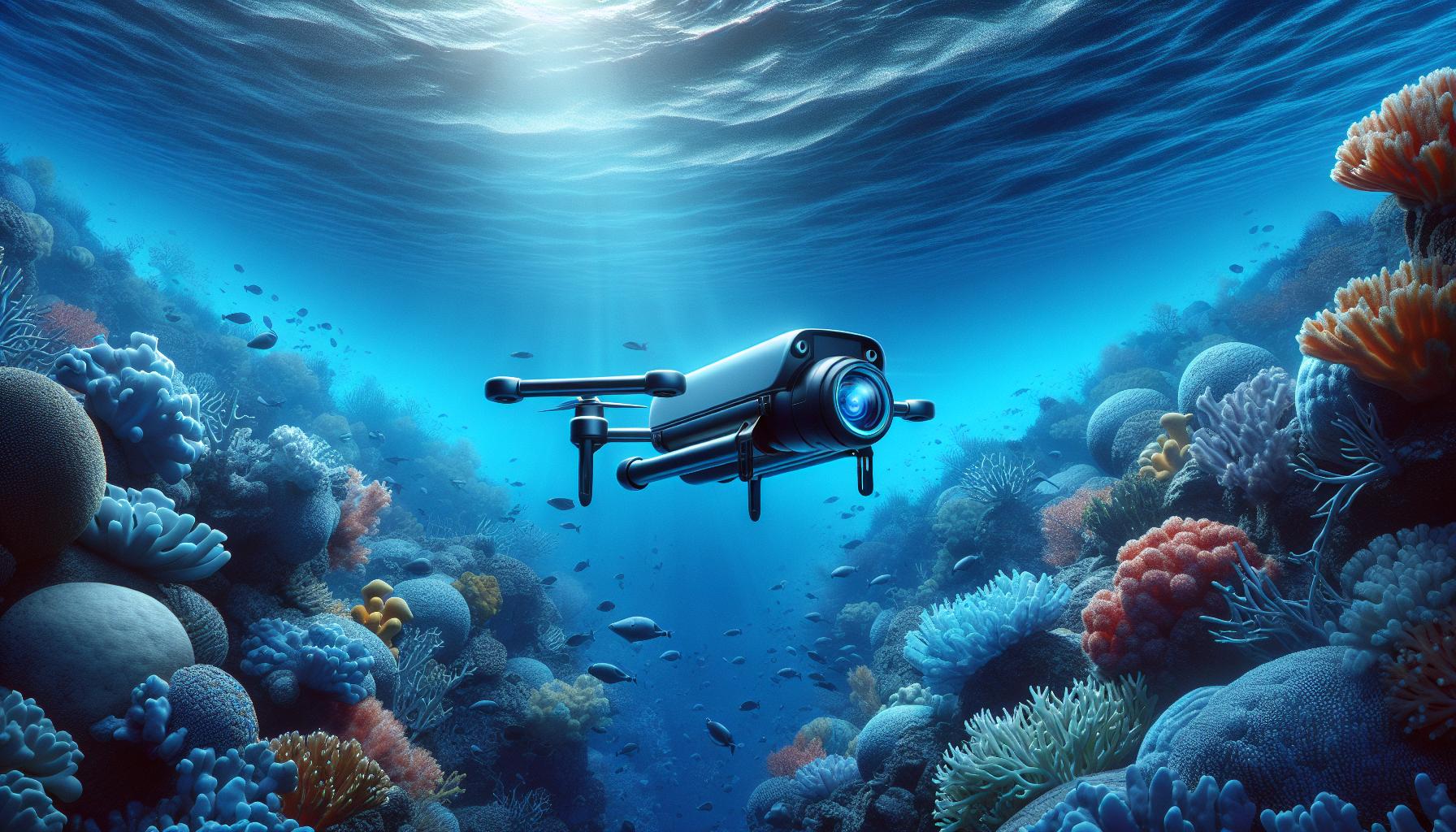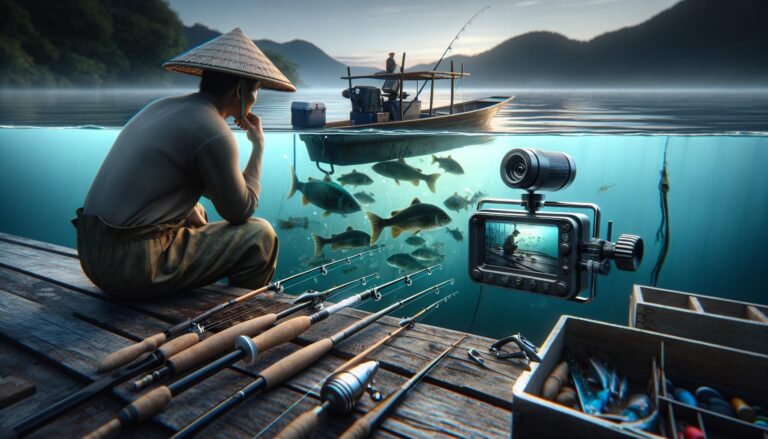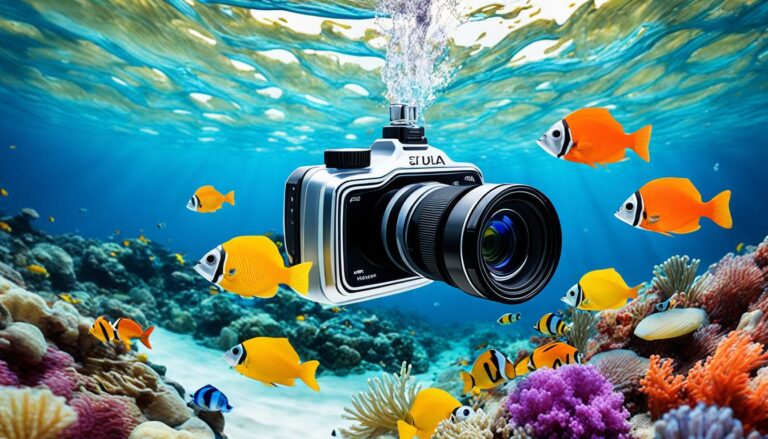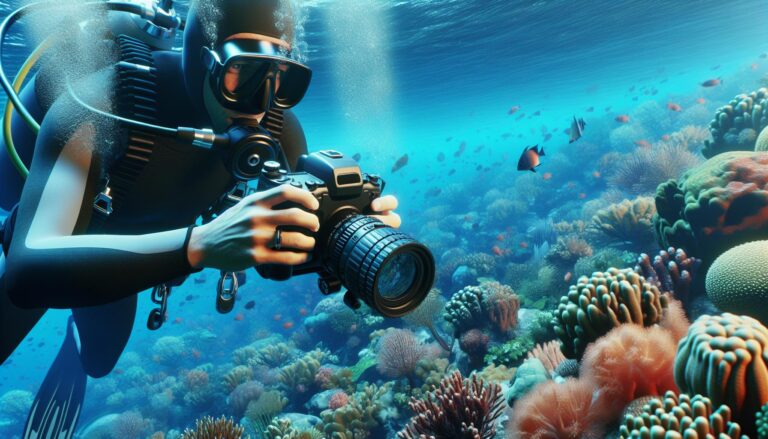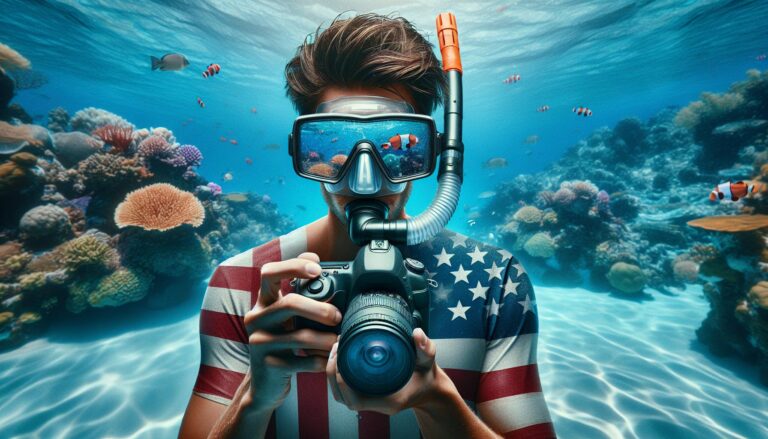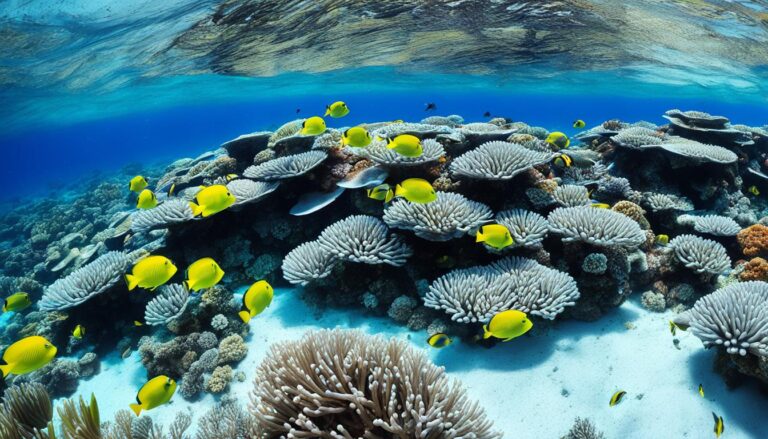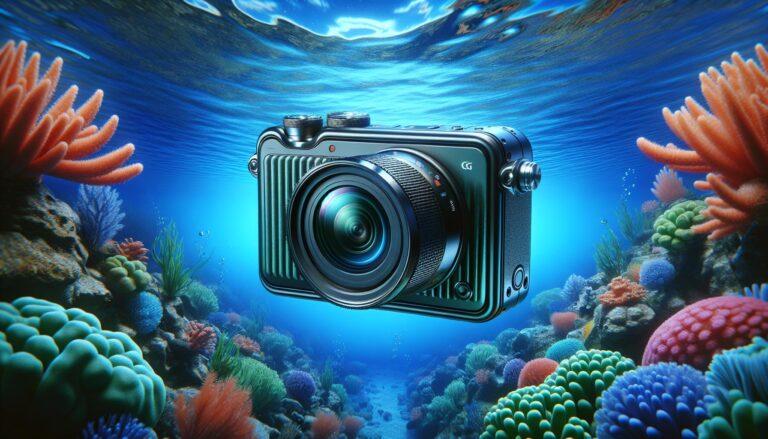Ultimate Guide: Selecting, Using and Maintaining Your Underwater Camera Drone
Imagine exploring the deepest corners of the ocean, witnessing the vibrant marine life, and capturing their mesmerizing beauty, all while staying dry on the shore. This isn’t a scene from a sci-fi movie, but a reality made possible by underwater camera drones. These high-tech gadgets are revolutionizing the way we perceive and interact with the underwater world.
Whether you’re an avid scuba diver, a marine biologist, or just a tech enthusiast, underwater camera drones offer a new perspective to your explorations. They’re not just about capturing stunning underwater footage, but also about opening up a world of possibilities for research, exploration, and entertainment. Let’s dive deeper into the fascinating world of underwater camera drones and discover what makes them a must-have gadget for ocean lovers.
Understanding the Underwater Camera Drone Concept
True innovation lies beneath the surface. As we plunge into the depths, unraveled mysteries and boundless beauty play out before the lens of underwater camera drones. These machines, able to survive the underwater realm’s immense pressure and darkness, provide invaluable insights and picturesque vistas. Let’s peep into their inner workings and exceptional features, which make them indispensable for exploring our oceans.
Workings of an Underwater Camera Drone
Understanding the functioning of the underwater camera drone starts with its unique design, suitable for aquatic environments. Primarily, such drones house a waterproof hull, safeguarding their sophisticated electronics from the harsh underwater conditions. Resembling miniature submarines, their distinct buoyancy control systems allow them to navigate the depths comfortably.
Propulsion comes from brushless motors, performing seamlessly in aquatic conditions. Using high-frequency waves, the included SONAR (Sound Navigation and Ranging) system aids in detecting obstacles, distance, and depth beneath water, given that radio waves falter in such settings.
Simultaneously, control of these drones happens through the drop of a tether from a ship or shore. This tether links the drone to a control console, passing commands and receiving video feed in real-time.
Features to Look for in an Underwater Camera Drone
When considering investing in an underwater camera drone, there are certain features you’d want to account for. Key among these is depth capacity. A quality drone, for example, can reach a seabed at 300 meters or more. Opting for a reinforced hull could lead to deeper dives, correlating to better exploration and footage.
Another important feature is battery life. Most drones guarantee a life of 2-3 hours on average, enough for covering a hefty area underwater. Extendable battery life could potentially allow continued immersion, collecting discoveries at your own pace.
Camera resolution often determines the price tag but makes a significant impact on the quality of your footage. The high-end drones typically incorporate 4K cameras, rendering ultra-sharp videos and images.
Finally, the inbuilt stability feature ensures smoother maneuvering and improved footage. These drones often come equipped with multi-directional thrusters and gimbals that account for currents and movements, thereby offering stable video results.
In essence, understanding the concept of underwater camera drones paves the way for their sharper application in research, exploration, and visual storytelling by capturing more breathtaking views and critical data from the hidden quarters of our planet.
Top Underwater Camera Drones On the Market
Delving deeper into your pursuit of aquatic exploration, let’s spotlight the top-rated underwater camera drones available today. These high-performing drones exemplify the marvels of technology, revolutionizing our ability to explore and document the underwater realm.
Insights into Top-rated Camera Drones
From capturing high-resolution footage to descending into the unknown depths, below are some market leaders in underwater camera drones. They make an exemplary statement with their features, making them an ideal choice for your next underwater venture.
- PowerRay Wizard: Known for its exceptional video quality, the PowerRay Wizard captures 4K UHD videos and 12MP photos, ensuring breathtaking underwater visuals. Its sonar system, capable of detecting depth up to 70m, ensures precise navigation.
- Geneinno T1 Pro: It differentiates itself with a robust titanium alloy pressure body that can descend up to 175m deep. Remarkably, the built-in grabber arm facilitates item retrieval at depth, a feature unique to the Geneinno T1 Pro.
- DJI Phantom 4 Pro: While it’s not an underwater drone, the DJI Phantom 4 Pro sets a benchmark with its robust camera, able to record 4K 60 fps video. Waterproof cases provide the drone its aquatic viability.
- QYSEA Fifish V6: This drone stands out with its omnidirectional movement, giving you complete control of underwater navigation. Deeper dives are manageable as well, with a maximum depth limit of 100m.
- Gladius Mini Drone: Lightweight and compact design make this drone a perfect choice for expeditions. Its distinguishing feature is the five thrusters, allowing for responsive and precise movement in the water.
Exploring Uses of Underwater Camera Drones
Drones equipped with underwater cameras pack a punch, revolutionizing every field they touch – marine research, photography, and leisurely pursuits like fishing. Let’s dive into their applications.
Uses in Marine Research
Underwater camera drones play a pivotal role in marine research, opening new depths of the ocean. These small, remotely operated machines are capable of venturing into areas previously unreachable by human explorers. Tailored with high-resolution cameras and UXGA sensors, the drones provide researchers with high-quality images and footage of marine organisms, detecting their behaviors and interactions in the aquatic ecosystem.
For instance, QYSEA Fifish V6, a popular underwater drone, posses an ability to go as deep as 100 meters, enabling data collection in inaccessible marine depths. The drones provide valuable insights into scientific research, from analyzing coral reefs’ health to studying marine biodiversity, and on a larger scale, adding particular value in climate change studies by assessing ocean temperature and acidity levels.
Underwater Photography and Filmmaking
The magic of underwater camera drones extends beyond research – It’s transfiguring the realm of underwater photography and filmmaking. Their compact designs and quality imaging capabilities make these drones a popular choice for photographers and filmmakers, capturing underwater landscapes and aquatic life.
For instance, the PowerRay Wizard is a much-loved drone among the creative world, known for its unique ‘Fish finder’ sonar and stunning 4K UHD video recording. As a boon, the drones don’t stir up silt like divers and submersibles, ensuring images and footage remain clear and unobscured. From shooting natural documentaries, commercial movies to promo videos for scuba diving certifiers, these drones are painting a vivid picture of the aquatic world.
Recreational Uses of Underwater Camera Drones
Not just science and art, Underwater camera drones are also making waves in recreational use. Perfect for seaside vacations or lake adventures, these drones are a boon for scuba divers, snorkelers, and enthusiastic anglers alike.
A drone like Geneinno T1 Pro with its angler-friendly design communicates with the user, detecting fish distribution, and generates a real-time underwater stream, proving to be the ideal companion for anglers. These inclusive drones provide a fun and unique way to explore underwater treasures and landscapes, creating a whole new world of entertainment and adventure.
Essential Maintenance Tips for Underwater Camera Drones
Proper care extends the life of your underwater camera drone. Whether it’s a PowerRay Wizard, Geneinno T1 Pro, DJI Phantom 4 Pro, QYSEA Fifish V6, or a Gladius Mini Drone, maintenance is crucial. Let’s dive into the ways to keep your device in its best shape.
Routine Cleanup and Maintenance
Periodic cleaning is paramount for optimal performance. After every use, wash your drone with fresh water. This helps prevent potential damage from salt, chlorine, or any other corrosive substances. Ensure you dry each part thoroughly before storing it. It’s also a best practice to take the drone apart periodically to clean individual components — your drone’s motors, for instance, often accumulate debris that could impair functionality.
While cleaning, inspect your drone for any visible signs of damage, especially in crucial parts like the rotors, camera, and cables. If you suspect malfunctions, consider professional inspection. Timely spotting of issues can help avoid expensive repairs or replacements in the future.
Remember to update your device’s software periodically. These updates not only fix bugs but also provide performance improvements.
Protecting Your Drone in Harsh Conditions
Underwater drones often tackle harsh conditions. Safeguard your drone by avoiding areas with strong currents or underwater debris that could potentially lead to collisions. Despite the built-in protection, avoid extremely high or low temperatures. Excessive heat may cause overheating, while freezing conditions may affect the battery’s performance.
Before a dive, scout the area and plan your path carefully. Focus on avoiding collisions or entanglements. Use the rescue strap or attachment system included with most underwater drones in case of mishaps.
Lastly, transport your drone safely. Use a secure, padded case to prevent unwanted shocks during transit.
With these tips, I’m confident that my underwater camera drone — regardless of model — will be properly cared for, providing me with stunning underwater visuals and valuable data for years to come.
Legal Considerations for Using Underwater Camera Drone
As the use of underwater camera drones, like the PowerRay Wizard, Geneinno T1 Pro, DJI Phantom 4 Pro, QYSEA Fifish V6, and Gladius Mini Drone, becomes more prevalent, it’s vital to understand the legal aspects that govern their usage. This section will help you navigate the legalese and protect your interests.
Understanding Local Drone Laws
Not all places view drone usage the same way. Rules vary depending on your location, and some areas may restrict certain types of operations. For example, the Federal Aviation Administration (FAA) in the US imposing specific regulations on drone usage, whereas the Civil Aviation Safety Authority (CASA) in Australia may have different rules. These regulations may cover areas such as operational limits, registration requirements, and restrictions on drone use in certain zones or during specific times. Therefore, always make sure to check and comprehend the local drone laws before deploying your underwater camera drone.
Drone Insurance: Why It’s Important
Despite the meticulous maintenance that you might be undertaking for your drone, accidents still occur. Proactive measures such as obtaining drone insurance can offer an added layer of financial security. This insurance usually covers liability in case of damage to property or injury to persons. Some insurers, such as AIG and Allianz, even offer customized policies for drone operators. Hence, understanding why drone insurance is vital and selecting the right coverage can save you headaches down the line. Always remember: when you invest in an underwater camera drone, it’s just as important to protect it legally as it is to maintain its physical condition and performance.
Conclusion
So, we’ve journeyed through the world of underwater camera drones. We’ve seen how they’re transforming ocean exploration, making waves in research, entertainment, and more. We’ve peeked into the features that make models like the PowerRay Wizard, Geneinno T1 Pro, DJI Phantom 4 Pro, QYSEA Fifish V6, and Gladius Mini Drone stand out. It’s clear that these drones, with their high-res video, deep dive capabilities, and precise navigation, are game-changers in underwater documentation.
We’ve also delved into the nitty-gritty of drone maintenance. Regular cleaning, software updates, damage inspection, and safe transportation are vital to keep your drone in top shape. Remember, a well-maintained drone is a long-lasting one.
Lastly, we’ve touched on the legal side of things. Understanding local drone laws and securing drone insurance is a must for every drone enthusiast. It’s all about flying responsibly and protecting your investment. So, here’s to exploring the underwater world with your camera drone, capturing stunning visuals, and making unforgettable discoveries.

